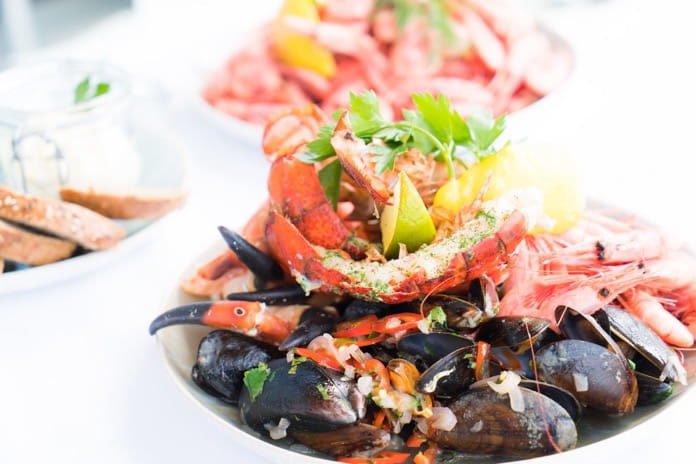Researchers investigated the potential of seafood to be considered fertility food by examining the relationship between seafood consumption and reproduction.
Seafood consumption and pregnancy
Infertility is defined as the failure to conceive after 12 months of unprotected sexual intercourse with the intention of pregnancy.1 Infertility affects 15% to 25% of couples and can negatively impact relationships. Although treatments for infertility exist, identifying lifestyle factors that can increase the chances of pregnancy can play an important role.
There are controversial views on seafood being a fertility food. Seafood can be a source of reproductive toxins due to the biological build-up of environmental toxins in marine animals. These include chemicals such as mercury, dioxins, and organochlorines. On the other hand, higher intakes of marine omega-3 fatty acids have shown reproductive benefits.
The current recommendation for seafood consumption for the average American adult is 2 to 3 servings per week.2 The recommended for pregnant women or those who have a chance of pregnancy is less than three servings per week. The guidelines were placed to limit methyl-mercury exposure, which was linked to negative neurocognitive effects. However, there was a lack of research on the reproductive benefits of seafood consumption.
Researchers in the United States investigated the role of seafood as fertility food.1 The study used data from the Longitudinal Investigation of Fertility and the Environment (LIFE) study. It included data from 501 couples that met the inclusion criteria and wanted to become pregnant. The study was conducted between 2005-2009 in the U.S. states of Texas and Michigan.
The study required the couples to complete individual food recall and sexual intercourse journals. The couples were followed for up to a year or until pregnancy. Pregnancy was determined using an in-home pregnancy test. The results of the study were published in the Journal of Clinical Endocrinology & Metabolism.1
Seafood increased chances of pregnancy
Couples who consumed eight or more seafood servings per menstrual cycle had a 61% greater chance of and also had 22% more sexual intercourse. Male partners who ate eight or more seafood servings per cycle had 47% healthier sperm compared to those who consumed one or fewer servings. Similarly, female partners that had a higher consumption of seafood showed a 60% increased chance for reproduction.
Eight or more servings of seafood per cycle are roughly equal to two or more seafood servings per week. It is important to keep in mind that the study relied heavily on self-reported data. This could have been a source of error, especially when measuring the baseline seafood intake at the beginning of the study. It is also common for food diaries to have discrepancies due to recall or other factors.
Seafood as a fertility food
Seafood can be a source of toxins but is also a great source of beneficial nutrients such as omega-3 fatty acids. The results of the study showed that seafood might be associated with improved reproduction health. Therefore, reviews and updates on preconception lifestyle and diet guidance are important. A future direction for research should specify the types of seafood that affect reproduction.
Infertility can have a profound impact on a couple. Medical treatments for infertility exist, but there is limited success and availability for most people. Lifestyle changes like eating foods that support the chances of pregnancy are one method to increase a couple’s chance of conception.
Reference
- Gaskins AJ, Sundaram R, Buck Louis GM, Chavarro JE. Seafood intake, sexual activity, and time to pregnancy. J Clin Endocrinol Metab. 2018;103(7):2680-2688. doi:10.1210/jc.2018-00385
- Advice about eating fish. U.S. Food and Drug Administration. October 2021. Accessed May 22, 2023. https://www.fda.gov/food/consumers/advice-about-eating-fish.



